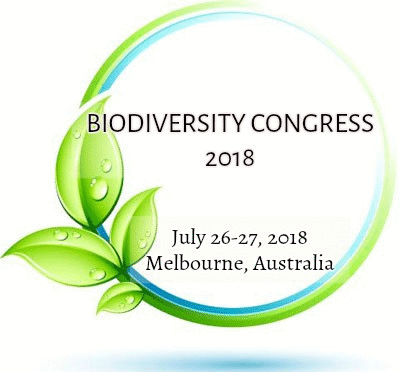
Wilbert A. Aureo
Bohol Island State University Philippines
Title: Impact of anthropogenic disturbance on anurans habitat and species diversity in Silago, Southern Leyte, Philippines
Biography
Biography: Wilbert A. Aureo
Abstract
Statement of the Problem: The combinations of natural and anthropogenic factors such as climate, geographic ranges and vegetation types (Cueto and Casenave, 1999) are considered to have a significant influence on species distributions and diversity (Mallari, 2009). The pattern of increase in habitat heterogeneity on the structure and composition of vegetation becomes complex if the niche diversity and species diversity increases (Cramer and Willig, 2002; Tews et al., 2004; Gingold et al., 2010; MacClain and Barry, 2010). Moreover, several species of forest anurans are correlated with the quantity and quality of woody debris, litter depth, and over-storey canopy closure (deMaynadier and Hunter, 1995). The Philippines is one of the few countries in the world that is covered by rain forest (Schulte, 2002). It is also considered as one of the world’s mega diverse countries that hosts a large share of endemic flora and fauna (Myer et al., 2000). However, due to the conversion of forests to marginal agriculture, commercial agriculture, and timber plantations, these forest resources are disappearing at an alarming rate (Margraf and Milan, 2004.). Filipino farmers who are poor and lack employment opportunities in the lowland migrate to the upland areas where they cut down secondary forest and practice slash and burn farming (Kummer, 1992). Methodology & Theoretical Orientation: Establishment of plots followed the method of Williams (2004). Anurans collection was done at early morning 6:00 – 9:00 am and evening at 7:00–10:00 pm (Warguez et al, 2013; Mallari et al, 2014). Herbaceous layer, understory, canopy vegetation were identified (genus level) and counted. Follow the methods of (Woodwall and Willams, 2005). Each CWD was rated on its degree of decomposition ranging from 1 (sound, intact, no rot) to 5 (no structural integrity, soft, powdery). Temperature, rainfall and relative humidity were measured using thermometer, improvised rain gauge and psychro-dyne respectively. PROC Univariate Test for data normality and heterogeneity was done using Statistical Analysis System version 9.1 (SAS, 2003). PROC GLM was also used to check effect for the anthropogenic disturbance with habitat condition parameters and species richness and diversity. Finally, Duncan multiple range test (DMRT) was employed to test the factors. Findings: Both the species richness and diversity in the primary forest is significantly (p≤0.05) different from slash-and-burn cultivation (Fig. 2). Frog population increases steadily during natural succession, attaining similar characteristics to those from mature forest after regeneration following slash-and-burn cultivation (Pawar et al., 2004). Meanwhile, when the habitat starts to stabilize its condition (that is conducive to anurans), the frog species starts to increase dramatically. The study also showed that microclimatic parameters, microhabitat, and vegetation structures appear to be the factors influencing habitat condition of anurans which significantly (p≤0.05) affect anurans species richness and diversity. Conclusion & Significance: The results of the study affirm that anthropogenic disturbance alters anurans habitat condition, thereby, affecting its species richness and diversity. It is worth mentioning that there was a considerable reduction (p≤0.05) of anurans species richness and diversity in the primary forest, secondary forest, and slash-and-burn cultivation. Moreover, the study suggests that microclimatic parameters, microhabitat, and vegetation structures appear to be the factors influencing habitat condition of anurans which significantly (p≤0.05) affect anurans species richness and diversity.

